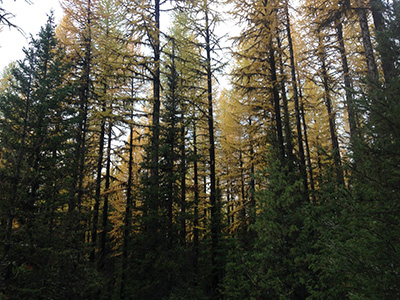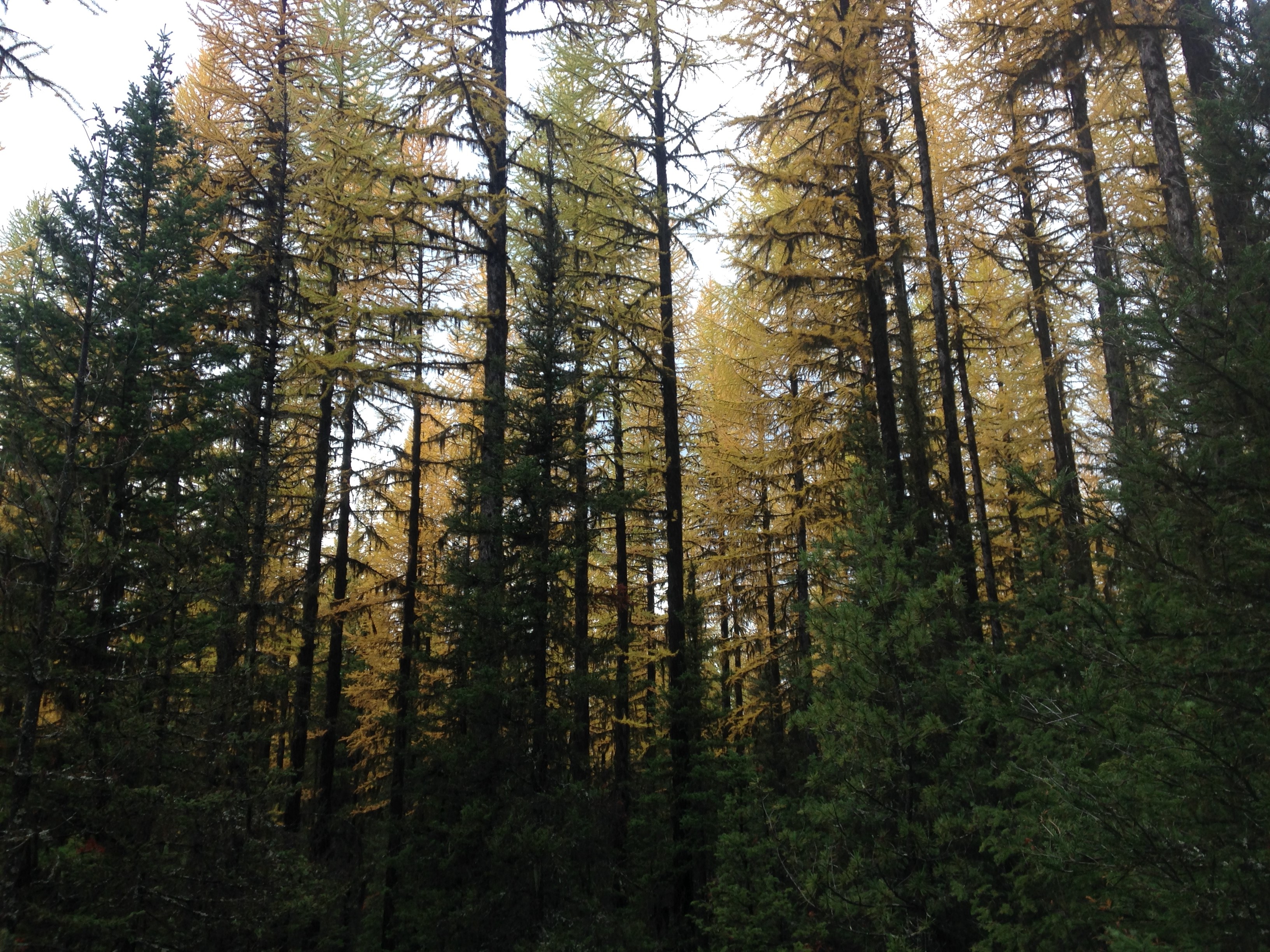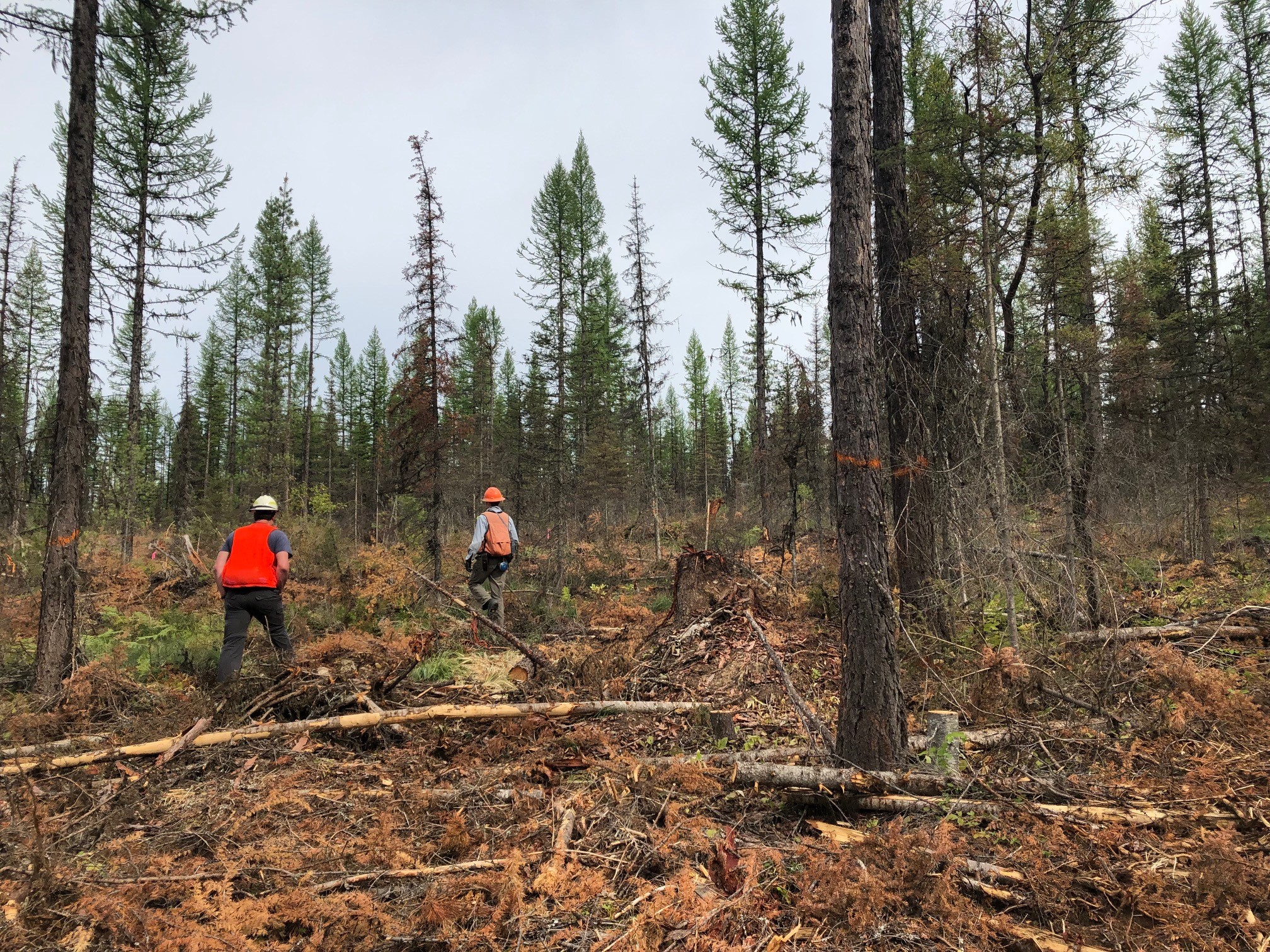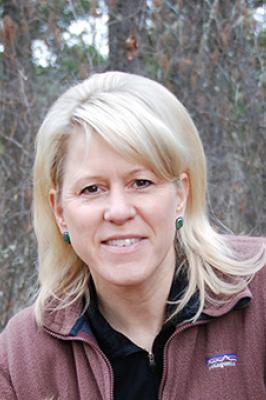Flathead National Forest and Coram Experimental Forest staff are collaborating in a nation-wide study called Adaptive Silviculture for Climate Change (ASCC). The goal of this project is to test different silvicultural approaches to climate change adaptation that will also serve as useful examples across the country.
Project Area:

The Flathead National Forest/Coram Experimental Forest is located in northwestern Montana. This Northern Rockies ASCC site is influenced by the warm, wet maritime airflows from the Pacific Ocean and the cooler, drier airflows from Canada. The study site consists of second-growth western larch-mixed conifer forests that regenerated after clearcutting in the 1960s, and provides habitat for lynx, grizzly bear, and many bird species. The Flathead/Coram ASCC site is part of the “Crown of the Continent,” a unique and diverse ecosystem whose rivers feed the Pacific Ocean, Hudson Bay, and the Gulf of Mexico.
Learn more about stewardship of western larch forests in an era of uncertainty here.
Site Leads & Partners:
Justin Crotteau (USDA Rocky Mountain Research Station), Elaine Kennedy Sutherland (USDA Rocky Mountain Research Station), and Terrie Jain (USDA Rocky Mountain Research Station) are the site leads for the Flathead National Forest ASCC site, along with Melissa Jenkins (USDA Flathead National Forest), and David Wright (USDA Rocky Mountain Research Station). Key Partners include Christopher Keyes (University of Montana).









